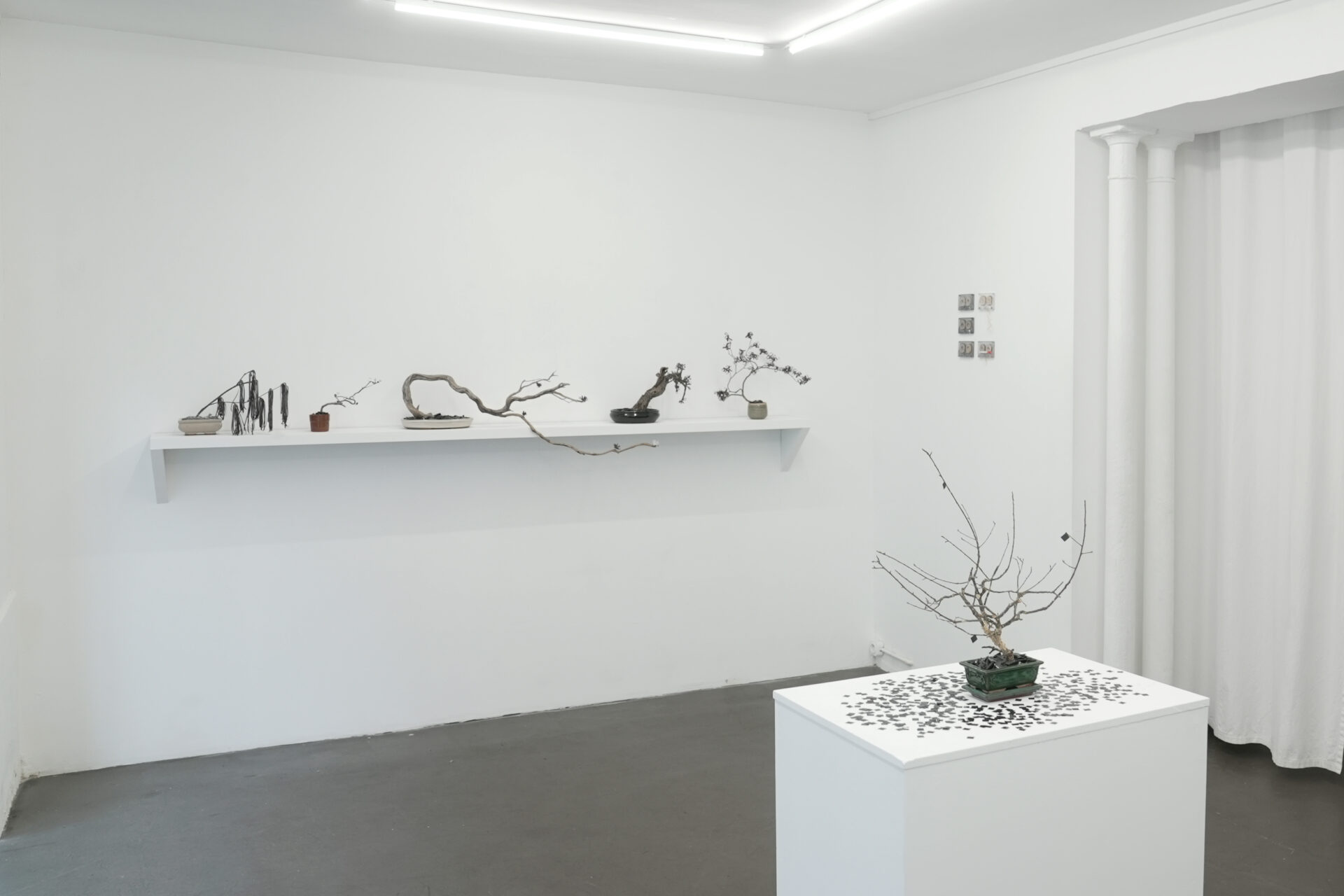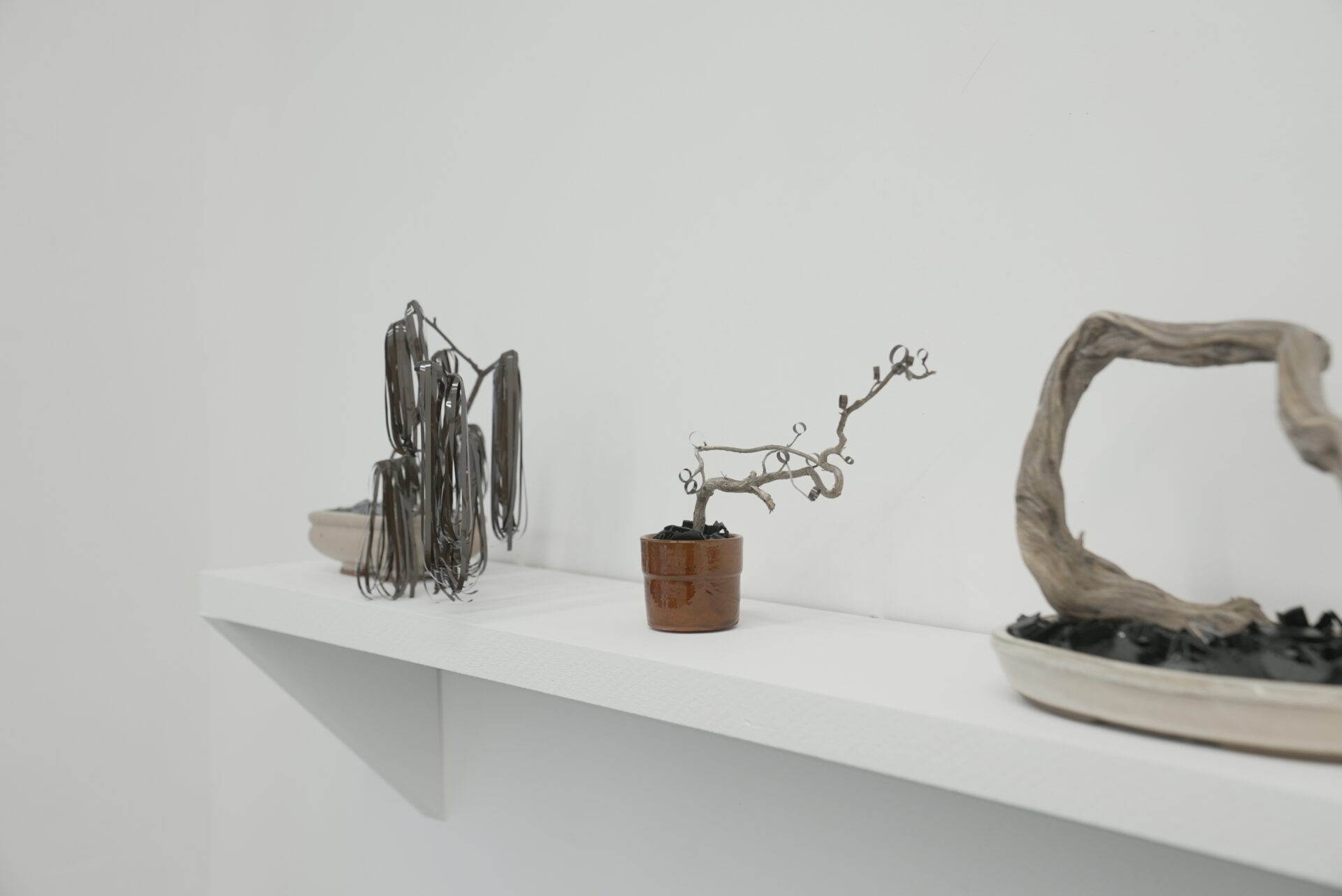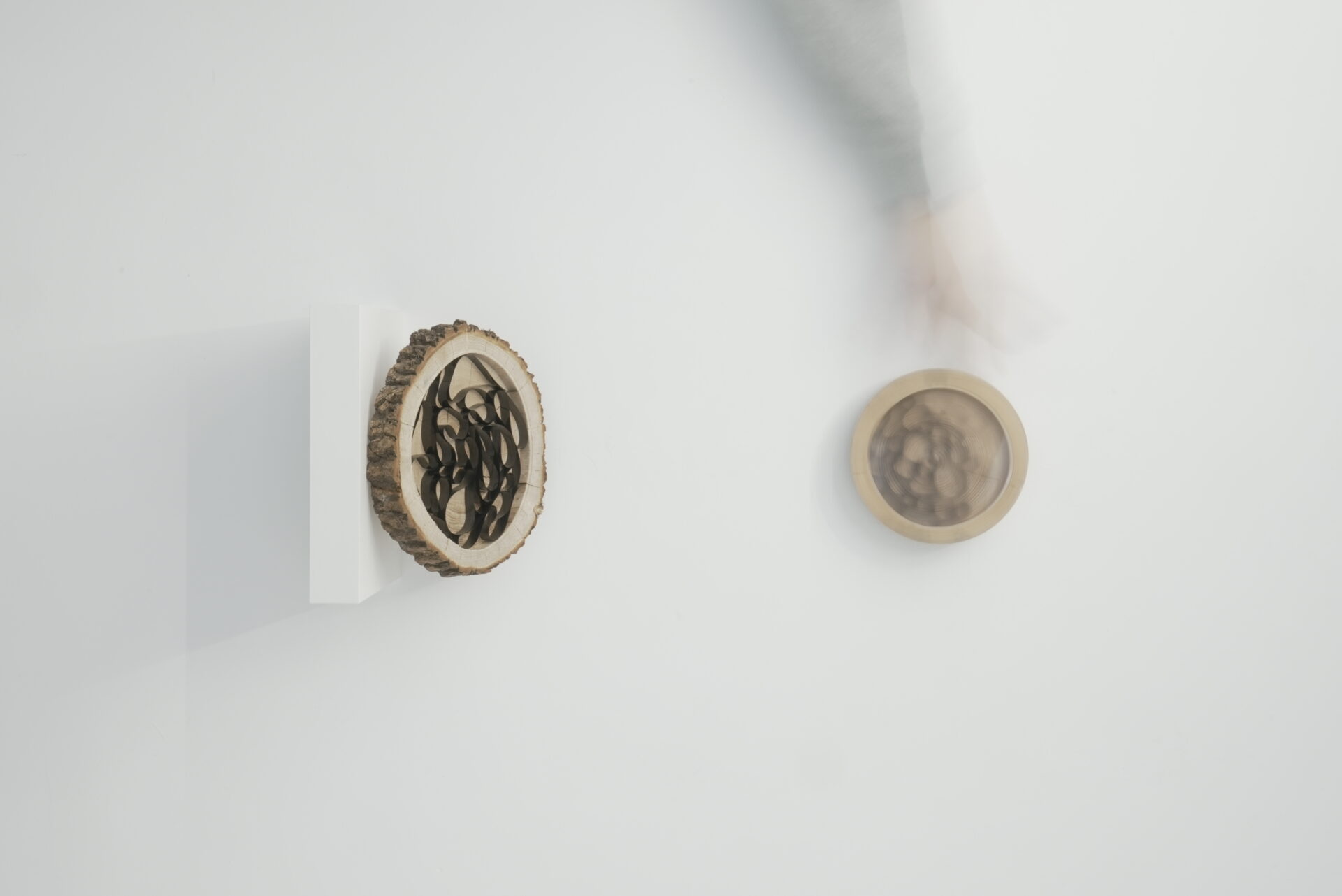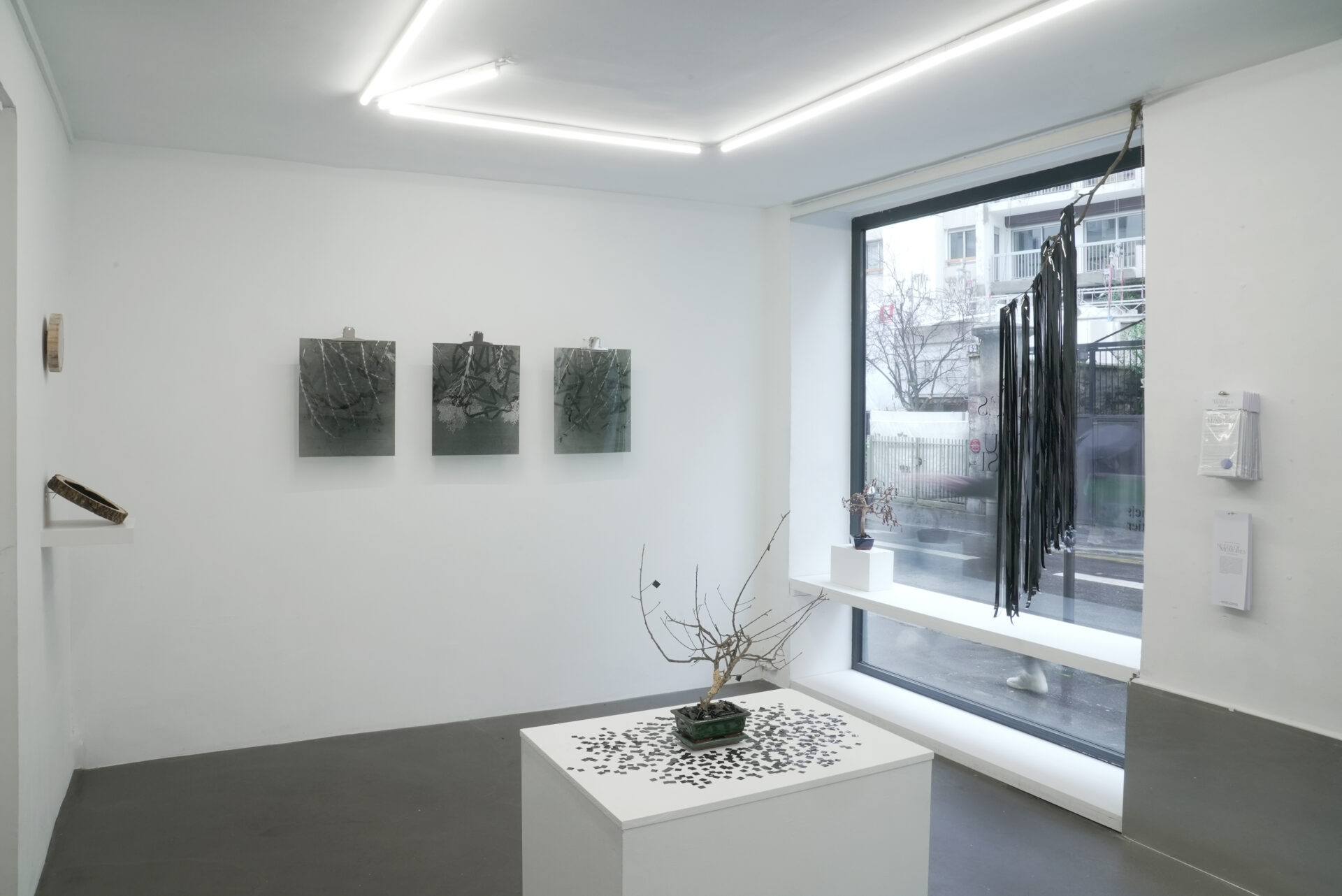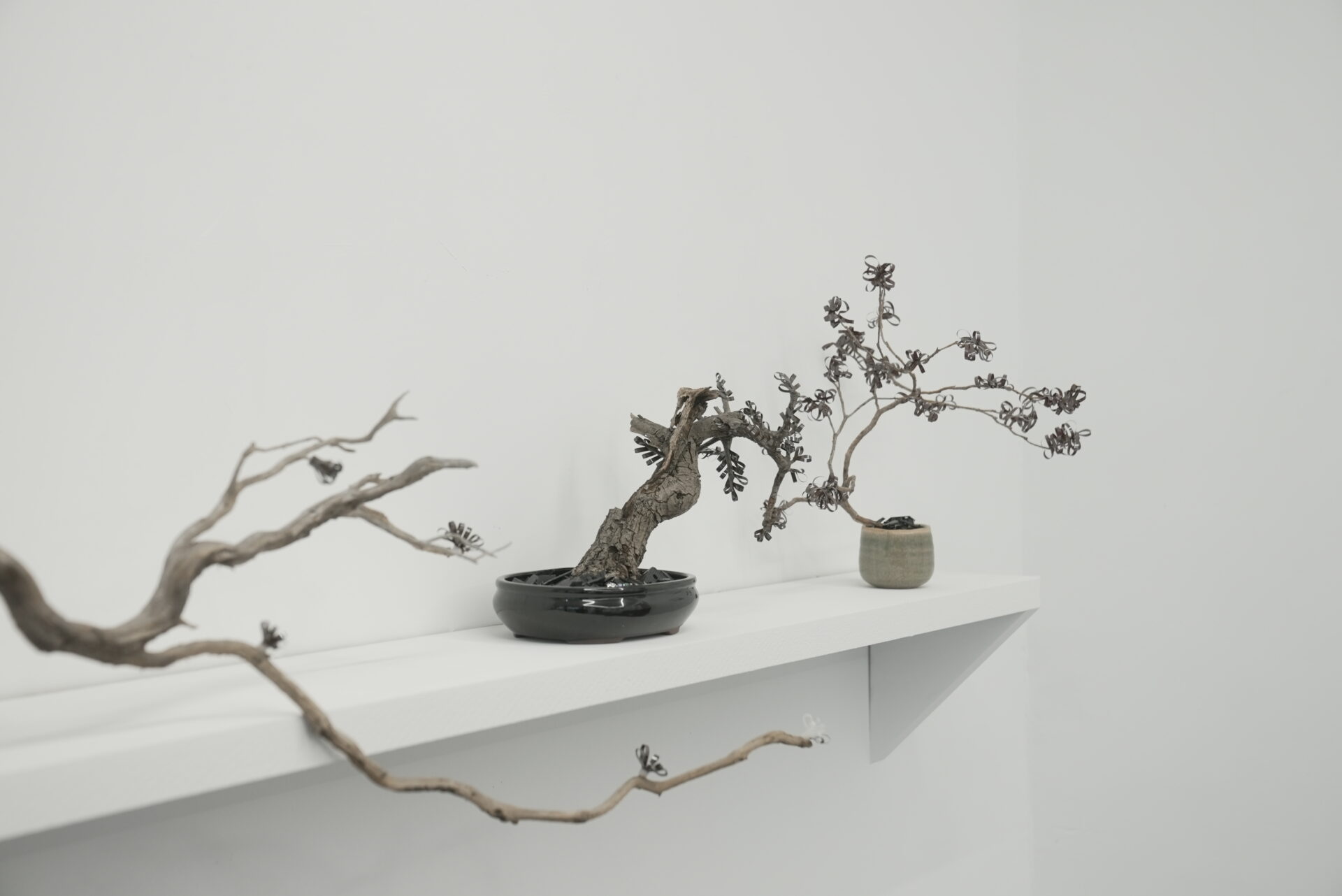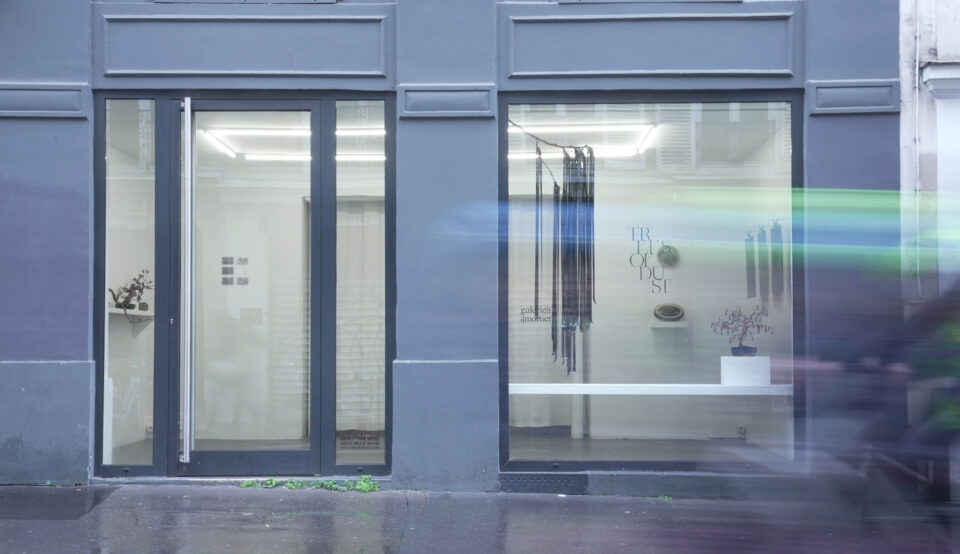Threes of dust
Solo show
Nature’ll be reborn from our waste?
Resume
[EN] Trees of Dust explores the hybridization of memory and nature in an era where waste has overtaken life. Djeff envisions a post-organic world, where the remnants of our civilization—magnetic tapes, crushed plastics—form the paradoxical soil of an artificial rebirth.
Here, Djeff sets the layers of time in dialogue: the tree rings, remnants of a bygone cycle, meet the obsolete loops of our magnetic archives. One thinks of Giuseppe Penone or Eva Hesse, for whom material carried both symbolic and political memory. Between relic and speculation, Trees of Dust offers an archaeology of the future: what will remain of our civilization, if not these technological remnants, partially digested—or not—by a mutating world? By exposing this potential forced cohabitation between nature and technology, Djeff offers no answers. Instead, he lets ambiguity emerge: between beauty and decay, between arte povera and post-humanism, his sculptures confront us with the strange fate of memory in a world saturated with forgetting.
[FR] Trees of Dust explore l’hybridation entre mémoire et nature à l’ère où nos déchets auront supplanté la vie. Djeff imagine un monde post-organique, où les traces de notre civilisation — bandes magnétiques, plastiques concassés — deviennent le terreau paradoxal d’une renaissance artificielle.
Djeff fait ici dialoguer les strates du temps : les cernes du bois, vestiges d’un cycle révolu, rencontrent les boucles obsolètes de nos archives magnétiques. On pense à Giuseppe Penone ou à Eva Hesse, pour qui la matière était porteuse d’une mémoire symbolique autant que politique. Entre relique et spéculation, Trees of Dust propose une archéologie du futur : que restera-t-il de notre civilisation si ce ne sont ces restes technologiques, digérés – ou non – par un monde qui mute ? En exposant cette possible cohabitation forcée entre nature et technologie, Djeff ne donne pas de réponses. Il laisse affleurer l’ambiguïté : entre beauté et décomposition, entre l’arte povera et le post-humanisme, ses sculptures nous confrontent à l’étrange devenir de la mémoire dans un monde saturé d’oubli.
